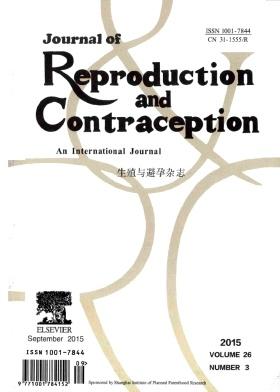基于文本挖掘和生物医学数据库的多囊卵巢综合征药物发现和潜在基因通路研究
IF 0.7
4区 医学
Q4 OBSTETRICS & GYNECOLOGY
引用次数: 0
摘要
目的:多囊卵巢综合征(PCOS)是育龄妇女常见的内分泌疾病。虽然它是月经紊乱、不孕症、肥胖和其他疾病的主要原因,但其分子机制尚不清楚。本研究旨在通过文本挖掘分析多囊卵巢综合征的靶基因、途径和潜在药物。方法:首先,将三个不同的关键词(“多囊卵巢综合征”、“肥胖/脂肪”、“无排卵”)上传到GenCLiP3,获得三个不同的基因集。然后我们在这些基因集中选择共同的基因。其次,我们对这些常见基因进行了基因本体和信号通路富集分析,然后进行了蛋白质-蛋白质相互作用(PPI)网络分析。第三,选择聚集在蛋白-蛋白网络中最显著的基因模块,通过基因-药物分析鉴定PCOS的潜在药物。结果:通过文本挖掘共获得与3个不同关键词相关的4291个基因,从3个基因集中筛选出72个共同基因,69个基因参与了PPI网络构建,其中23个基因聚类在基因模块中。最后,23个基因中的6个被30种现有药物靶向。结论:CYP19A1、ESR1、IGF1R、PGR、PTGS2、VEGFA等6个与卵巢甾体生成相关的基因和30种靶向药物的发现(P <0.001),可能用于PCOS的潜在治疗策略。本文章由计算机程序翻译,如有差异,请以英文原文为准。
Drug discovery and potential gene and pathway associated with polycystic ovary syndrome through text mining and biomedical databases
Objectives: Polycystic ovary syndrome (PCOS) is a common endocrine disease in women of childbearing age. Although it is a leading cause of menstrual disorders, infertility, obesity, and other diseases, its molecular mechanism remains unclear. This study aimed to analyze the target genes, pathways, and potential drugs for PCOS through text mining. Methods: First, three different keywords (“polycystic ovary syndrome”, “obesity/adiposis”, and “anovulation”) were uploaded to GenCLiP3 to obtain three different gene sets. We then chose the common genes among these gene sets. Second, we performed gene ontology and signal pathway enrichment analyses of these common genes, followed by protein–protein interaction (PPI) network analysis. Third, the most significant gene module clustered in the protein–protein network was selected to identify potential drugs for PCOS via gene–drug analysis. Results: A total of 4291 genes related to three different keywords were obtained through text mining, 72 common genes were filtered among the three gene sets, and 69 genes participated in PPI network construction, of which 23 genes were clustered in the gene modules. Finally, six of the 23 genes were targeted by 30 existing drugs. Conclusions: The discovery of the six genes (CYP19A1, ESR1, IGF1R, PGR, PTGS2, and VEGFA) and 30 targeted drugs, which are associated with ovarian steroidogenesis (P <0.001), may be used in potential therapeutic strategies for PCOS.
求助全文
通过发布文献求助,成功后即可免费获取论文全文。
去求助
来源期刊

Reproductive and Developmental Medicine
OBSTETRICS & GYNECOLOGY-
CiteScore
1.60
自引率
12.50%
发文量
384
审稿时长
23 weeks
 求助内容:
求助内容: 应助结果提醒方式:
应助结果提醒方式:


